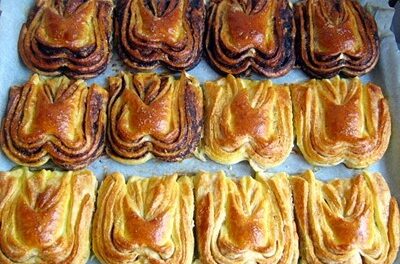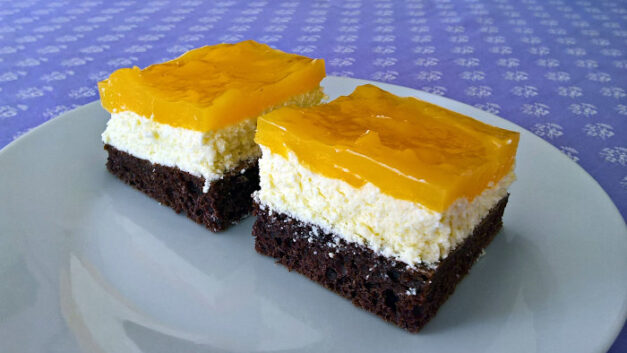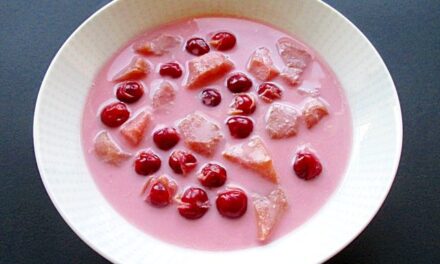10th January 1908 – this is the day when the first cocoa snails were born. A baker in Göd (a little town in the Danube bend, near Budapest) celebrated his 33th birthday by surprising his friends with a newly created pastry. He, however, made too many rolls, so he decided to sell them to his customers. The new product had an overwhelming success, so he kept baking it to the customer’s satisfaction. The original name of the cocoa rolls was csokoládés tekerge, which has been later changed to kakaós csiga (cocoa snails).
Today cocoa snails are undoubtedly the most popular sweet bakery product in Hungary, nearly 90 million pieces are sold anually. Quality level of bakeries can be easily tested by tasting the cocoa snails they supply: crispy, but not dry on the edges, and soft in the middle – these are the traits of a good cocoa snail. Though home cooks generally make cocoa snails from a plain yeast dough, the real kakaós csiga supplied in bakeries and coffee houses is made from Blundel pastry.
Blundel pastry is the base of many bakery products; it means a laminated yeast raised dough, which contains a significant amount of butter, and for this reason it’s a transition between yeast dough and puff pastry. Don’t worry, making plunder dough is not as difficult as it looks. The key to a good pastry lies in the folding technique: you can create layers of dough and butter by doing a simple fold and a double fold or bookfold. Folding is repeated three times, and during the rest of the time the dough sits in the fridge chilling. Concerning the filling, feel free to add more sugar and cocoa, or you can substitute cocoa for cinnamon or cardamom.




















4 Comments